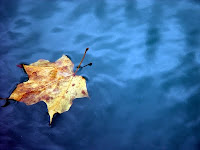
Shoot Early or Late: Consider shooting during sunrise and sunset hours for the best lighting opportunities as these times can help you capture the richness of color around you. The morning hours may yield the best results because the air will be cleaner and largely free of dust, smog and other airborne particles. Those minute flecks in the air can have an impact on the richness and clarity of your images.
Wait for the Clouds: If you’re trying to capture the vibrancy of autumn leaves and colors, patience pays. Overhead clouds can help retain the depth of color in the foliage whereas direct sunlight is often extremely harsh and can wash out the colors you are trying to capture.
Experiment with a Polarizing Filter: While it may not work in every situation, a polarizing filter can help in those situations where bright sunlight might flatten fall colors. Don’t be afraid to experiment with different tools during your session; when you take the time to try new things, you discover additional tricks to add to your photography arsenal.
Capture Contrast: The rainbow of colors fall provides is even more gorgeous when coupled with contrast. A ruby leaf paired with green grass or weathered wood can create a more powerful image than either item photographed alone.
 Stay Simple: Part of the beauty of fall can be captured in its simplicity. Zoom in close and focus on a single leaf or a small cluster of them. Spend a few minutes surveying your surroundings to find the perfect subject. It may be something completely unexpected such as an unassuming park bench or a solitary bird.
Stay Simple: Part of the beauty of fall can be captured in its simplicity. Zoom in close and focus on a single leaf or a small cluster of them. Spend a few minutes surveying your surroundings to find the perfect subject. It may be something completely unexpected such as an unassuming park bench or a solitary bird.
Rain Reigns: If it happens to rain in the location you wish to photograph, celebrate! The images you can capture after a rain occurs may just take your breath away. The leaves are clean and vibrant and the rain will clear away dust and other items that may get in the way of the perfect shot.
Play with Settings: If your digital camera includes settings to shoot in ‘vivid’ mode or has options to adjust saturation, use those settings to determine if the results are richer than what you would create in your standard automatic mode. You can also experiment with ‘cloudy’ settings on overcast days. Being open to experimentation may bring images that surprise and delight!

No comments:
Post a Comment